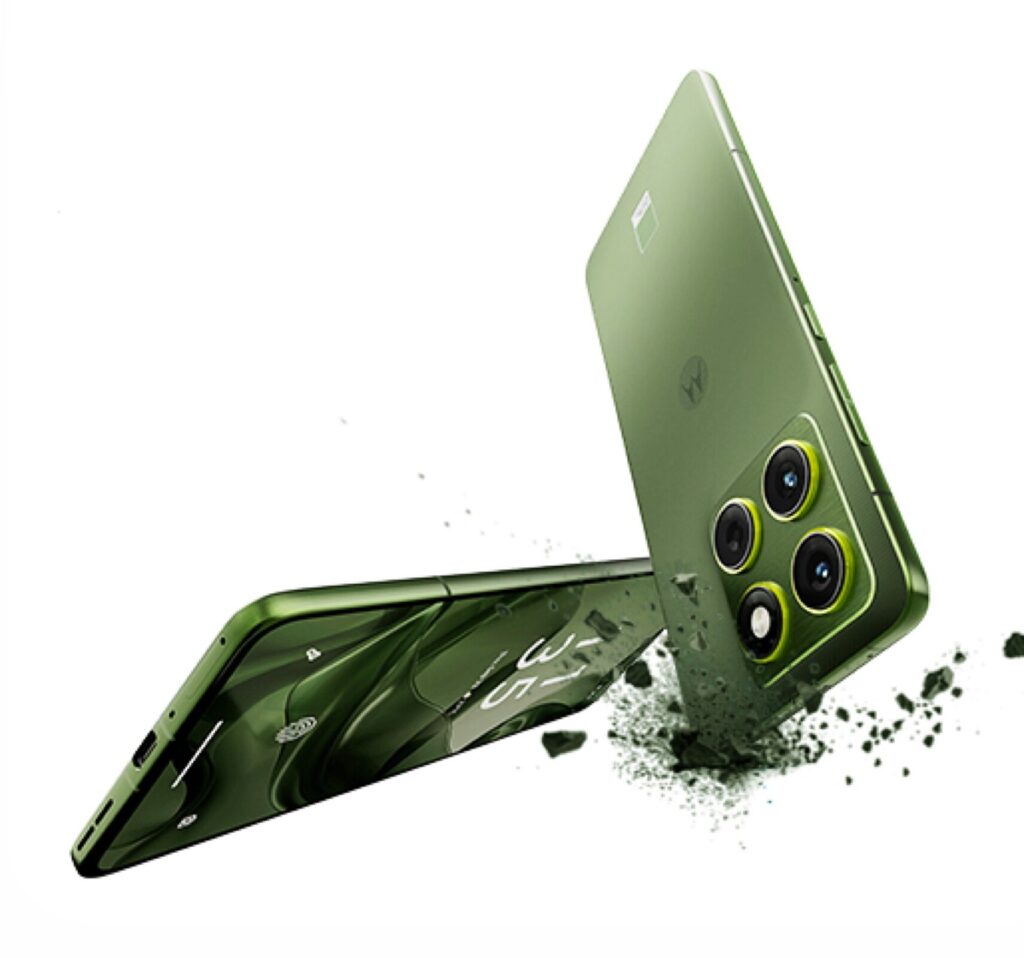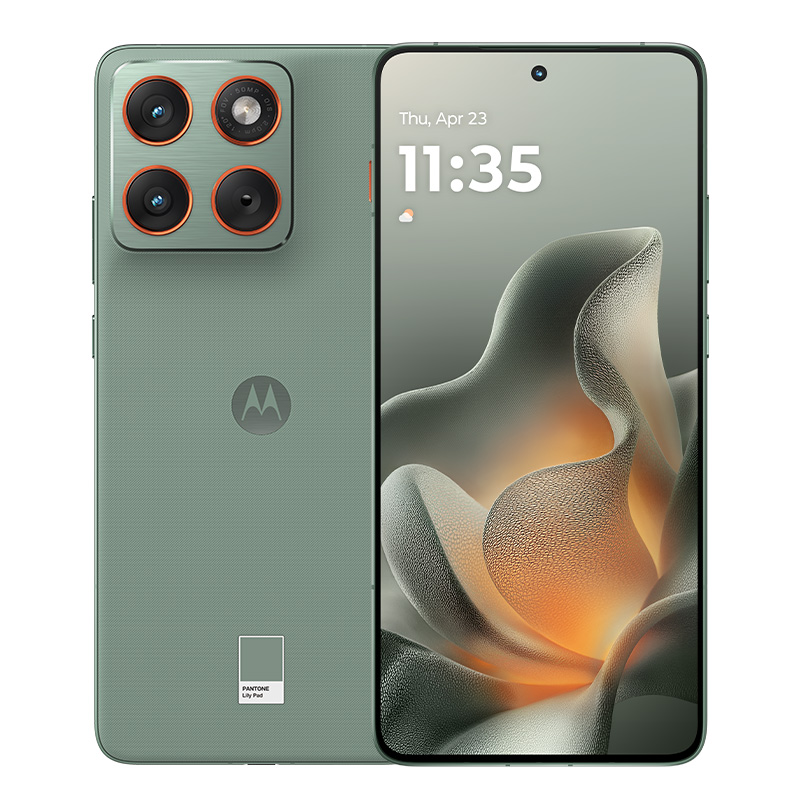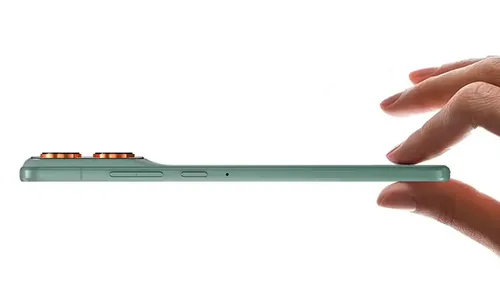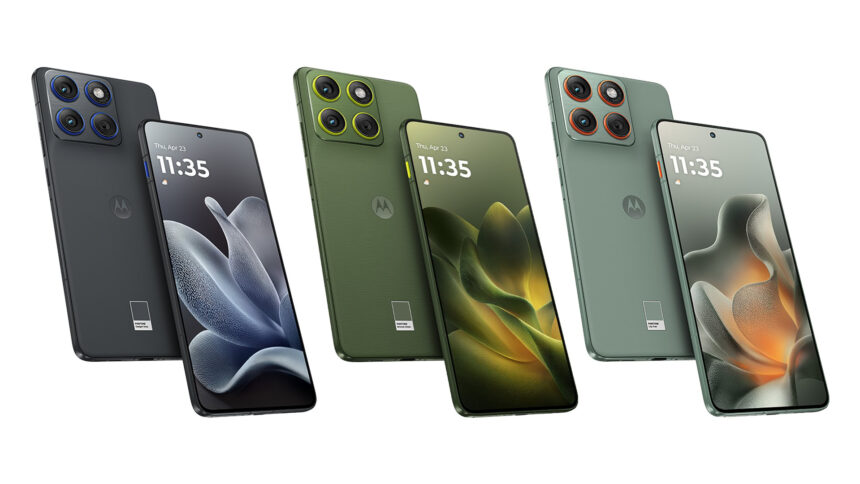Motorola’s Slim Marvel Enters the Ultra-Thin Race

Motorola tries to steel design spotlight with a smartphone that merges minimalism with power. The Moto X70 Air joins the contest against Apple’s iPhone Air and Samsung’s Galaxy S25 Edge. The X70 Air is ultra-thin and sleek — it carries a larger battery, faster charging, and a design that feels both premium and practical.
At 5.99mm thick and 159 grams, the X70 Air looks feather-light yet remains solid. It’s only slightly thicker than Apple’s iPhone Air (5.6mm), but noticeably lighter than Samsung’s 163-gram Galaxy S25 Edge. The X70 Air’s strength lies not only in its build but in its smart engineering — especially its 4,800mAh battery, which outperforms both competitors.
What’s Happening & Why This Matters
The Battle of Thin and Powerful

Motorola isn’t new to innovation, but the X70 Air shows renewed ambition. Despite its slim body, the device houses a Snapdragon 7 Gen 4 chip, positioning it as a strong mid-range performer that rivals higher-tier phones. Paired with 12GB of RAM and up to 512GB of storage, it ensures smooth multitasking, gaming, and AI-assisted features without overheating or lag.
The 6.7-inch P-OLED display delivers vibrant visuals at a resolution of 2712 x 1220 with a 120Hz refresh rate — making it ideal for streaming and immersive browsing. The in-display fingerprint sensor adds a layer of sophistication while keeping the surface clean and minimal.
When compared to its rivals, the X70 Air surprises with substance. The iPhone Air’s 3,149mAh and Galaxy S25 Edge’s 3,900mAh batteries pale beside Motorola’s 4,800mAh capacity. With 68W fast charging and 20W wireless support, the X70 Air refuels in minutes rather than hours — a feature busy professionals and travelers appreciate.
Built Tough for Everyday Use

Despite its wafer-thin design, the Moto X70 Air doesn’t feel fragile. It carries IP68 and IP69 certificatio; it is water-resistant and dustproof. Its aluminum frame and reinforced special glass construction increase resilience over most phones in its category.
The camera setup impresses, too. A 50MP front camera handles selfies with remarkable sharpness, while the triple 50MP rear camera system adds versatility. The main lens includes optical image stabilization and a 1/1.4-inch sensor, ensuring clarity even in low light. For a phone this slim, that’s remarkable.
Photography purists notice how Motorola continues its focus on real-life color balance — keeping tones natural without overprocessing.
The Software and Global Launch
The X70 Air runs on Android 16 out of the box. However, Motorola hasn’t yet disclosed its long-term software support plan — a topic that influences many buyers deciding between Android brands.
Initially launched in China, the Moto X70 Air debuts on 31 October, with two configurations: 256GB and 512GB. An international variant, named the Motorola Edge 70, launches in Europe on November 5.
Motorola doesn’t usually sell the same models across the U.S. and U.K. Teasers for international availability suggest the company wants to expand its ultra-thin lineup globally. That said, the U.S. market may still prioritize Motorola’s Razr series, leaving the X70 Air as an import-only option for now.

TF Summary: What’s Next
The Moto X70 Air represents a punctuated statement for Motorola’s design philosophy — minimal form, maximum function. With its ultra-slim body, powerful mid-range specs, and high-capacity battery, it challenges the narrative that thin phones must compromise performance.
MY FORECAST: If Motorola follows through with global availability, the X70 Air — or its Edge 70 twin — might excited users about smartphones again. Expect competitors to design and promote their models in the race for the thinnest, smartest phones available. The perid of “slim equals weak” is over.
— Text-to-Speech (TTS) provided by gspeech


